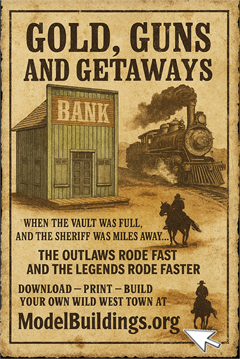Everything on model trains, model railroads, model railways, locomotives, model train layouts, scenery, wiring, DCC and more. Enjoy the world's best hobby... model railroading!
2-6-4T Locomotive Wheel Size
Bert writes:
“I am planning to purchase a 2-6-4T locomotive. The flanges look out of proportion and could cause future problems on track and turnouts. I see two (2) options: 1. don’t purchase, or 2. change wheelsets. A third option is to purchase and ‘go with the flow’. Any and all comments are welcome.”
Please add your thoughts below.
3 Responses to 2-6-4T Locomotive Wheel Size
Leave a Reply














It would help to know from what manufacturer and what age the locomotive is. If it is an older locomotive, and is designed to run on code 100 track, then it won’t work with the newer code 80 / 75 track.
If for some reason you really really really want this particular locomotive, then you should be prepared to change wheelsets, assuming that is even possible. If it was me, I’d want to know ahead of time what I was facing. Can you get more information from the seller so you know what you are getting into?
I have altered some old triang loco flanges by filing them down or using an angle grinder with the locomotive motor turning the drivers. If filing, do one side at a time or you will create a short circuit.
Robert M
Older models have wider flanges and run on taller rails. This can cause problems (particularly with points) if old rolling stock is running on modern (more accurate to scale) rails which are shorter.
Modern wheelsets may not necessarily fit on an older loco. Like Robert, I have ground down older Triang loco flanges to fit modern track, by stripping everything down, making a holder for the wheelset axle, and using a sanding disc in a small modeller’s lathe, letting the wheels run at a slight angle to the disc so that it turns them evenly.
In a nutshell, running old trains on modern track will cause problems, but it is possible if you have the skills (and inclination) to spend a lot of time on modifications.